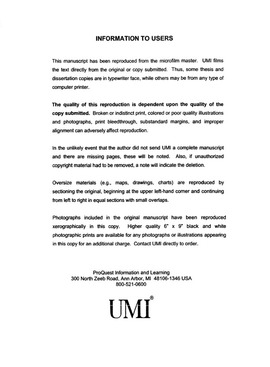| dc.contributor.advisor | Levy, David W., | en_US |
| dc.contributor.author | Shevitz, Amy Hill. | en_US |
| dc.date.accessioned | 2013-08-16T12:18:34Z | |
| dc.date.available | 2013-08-16T12:18:34Z | |
| dc.date.issued | 2002 | en_US |
| dc.identifier.uri | https://hdl.handle.net/11244/471 | |
| dc.description.abstract | In most small towns, the dominant Jewish institution was the synagogue, whose activities included mutual aid, philanthropy, and Jewish education. In the mid-nineteenth century, the Ohio Valley was the center of a movement for an Americanized Reform Judaism. Small Jewish communities there played a vital role in constructing Reform Judaism and its institutions. Jews saw themselves---and were seen---as simultaneously similar and different. Emphasizing shared values and interests, small town Jews affirmed the notion of "progress" central to small-town boosterism. | en_US |
| dc.description.abstract | The mass immigration of Eastern European Jews (1880--1920) coincided with new economic opportunities in some small Ohio River towns. The immigrants replenished the population of small Jewish communities, even as their integration created challenges. In the 1920s and 1930s, Jewish population and institutional strength reached their peak in most of the small towns. But from the 1950s through the 1990s, this situation was increasingly unsustainable. Small Jewish communities confronted population loss and the aging of their remaining constituents. In towns all along the Ohio River, congregations were forced to merge or even to disband. | en_US |
| dc.description.abstract | The Ohio River Valley was the center of the Trans-Appalachian West. Jewish merchants and land investors operated there during the colonial and early national eras. In the 1820s and 1830s, Jews began to settle permanently; in 1824 the first synagogue was organized in Cincinnati. Though the Valley moved beyond its frontier stage by 1825, it was still a Jewish frontier, a place of contact between the old and the new. The diversity of religious groups in the Valley made it the first testing-ground for religious pluralism in America. | en_US |
| dc.description.abstract | The Ohio River Valley's Jewish communities were built by immigrants from Central Europe in the 1830s--1860s. Jewish migration patterns were linked to the growth of commerce in the Valley and to similar European background. Jews created networks of business, social, and religious support in small towns throughout the Valley. | en_US |
| dc.format.extent | vii, 415 leaves : | en_US |
| dc.subject | History, United States. | en_US |
| dc.subject | Religion, History of. | en_US |
| dc.subject | Jews Ohio Ohio River Valley History. | en_US |
| dc.subject | Sociology, Ethnic and Racial Studies. | en_US |
| dc.subject | Jews United States History. | en_US |
| dc.title | Streams: Small Jewish communities on the banks of the Ohio. | en_US |
| dc.type | Thesis | en_US |
| dc.thesis.degree | Ph.D. | en_US |
| dc.thesis.degreeDiscipline | Department of History | en_US |
| dc.note | Source: Dissertation Abstracts International, Volume: 63-05, Section: A, page: 1969. | en_US |
| dc.note | Adviser: David W. Levy. | en_US |
| ou.identifier | (UMI)AAI3053167 | en_US |
| ou.group | College of Arts and Sciences::Department of History | |
